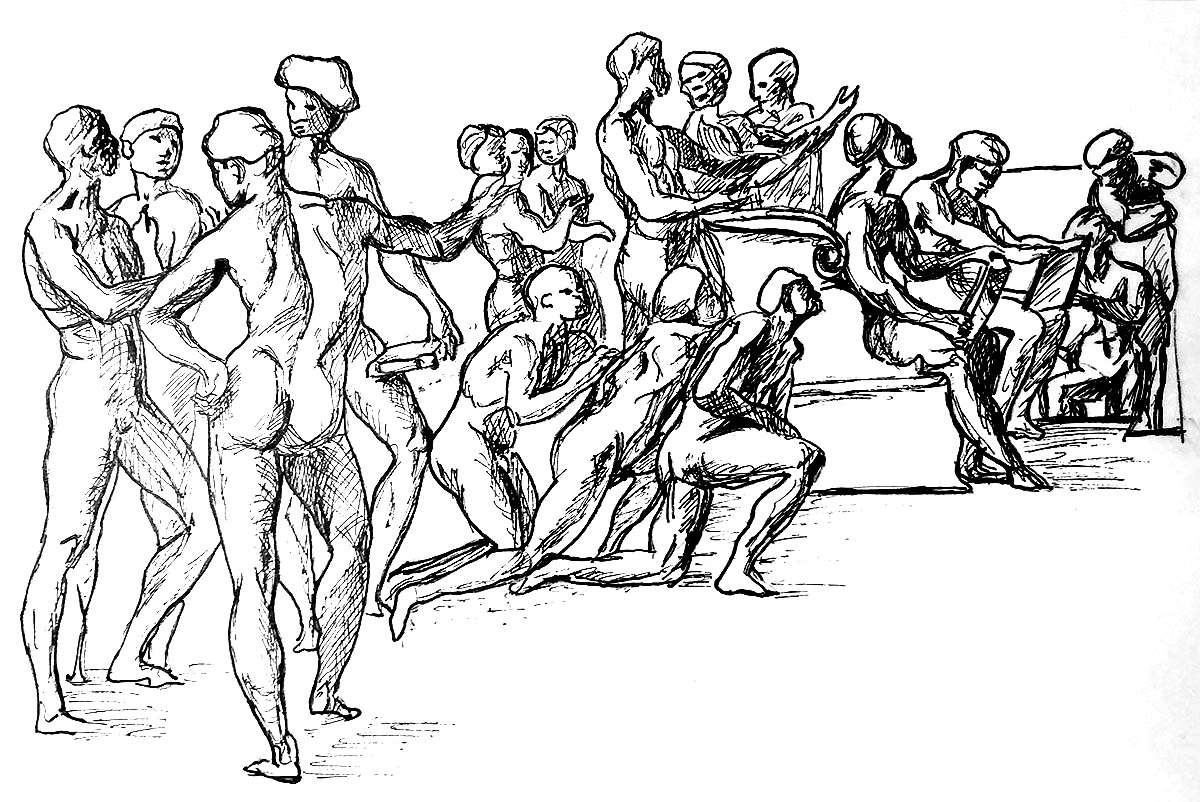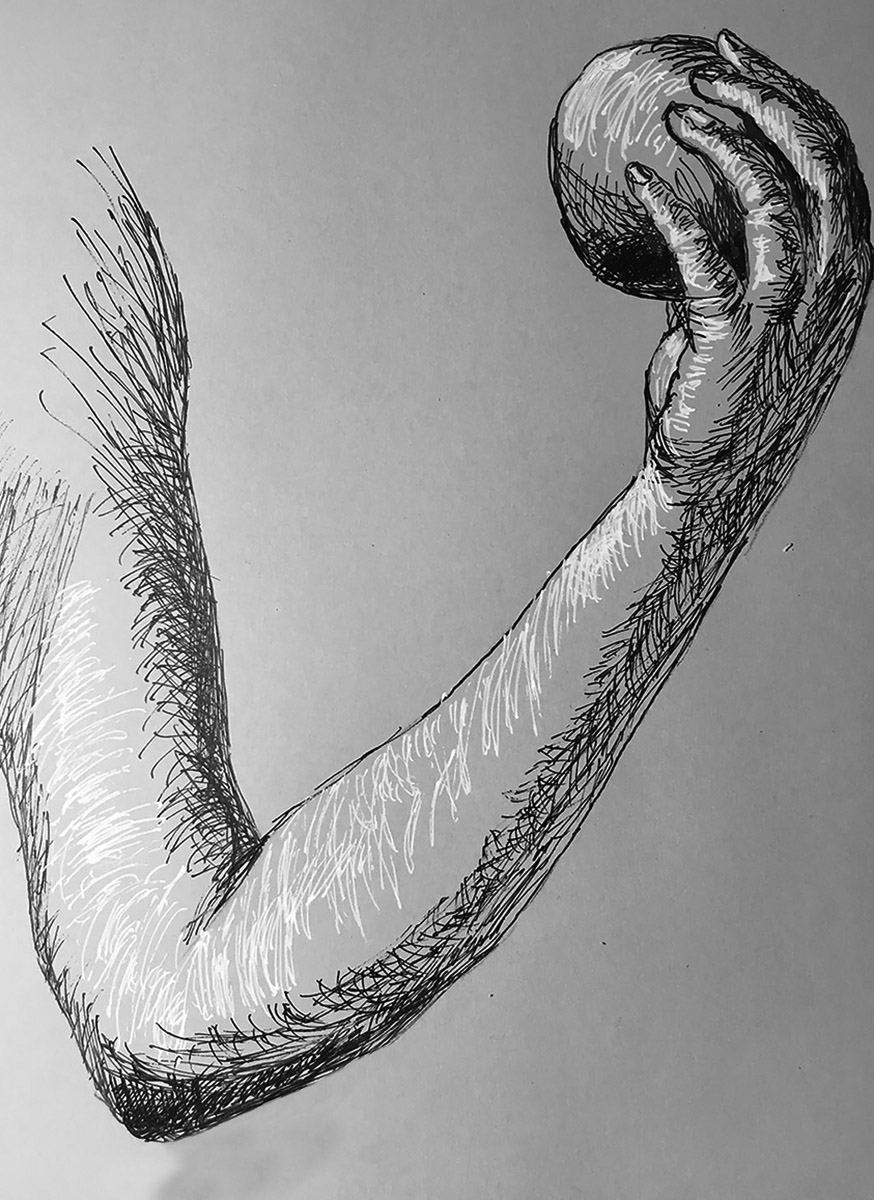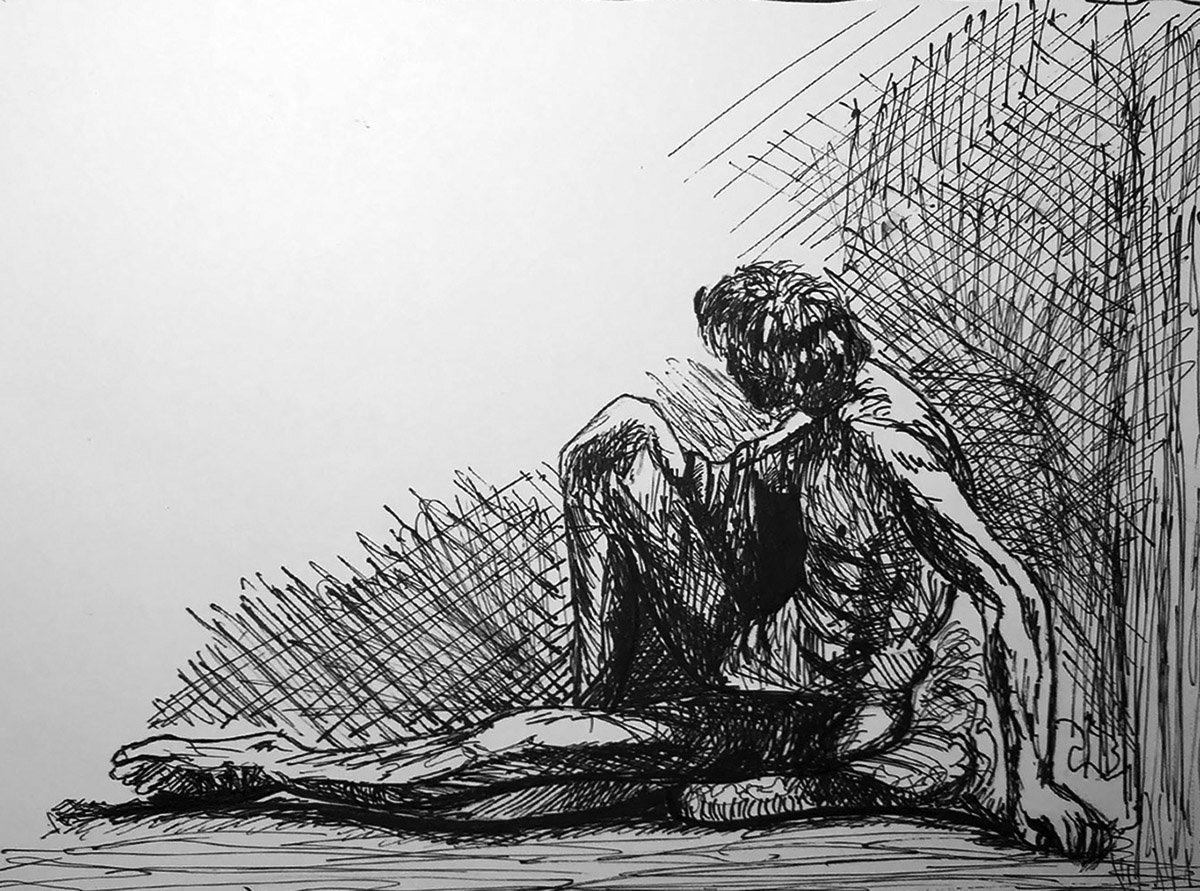
The image on this page that accompanies the text I am writing is a drawing in black and white gel ink pens copied from a work by the German Master Albrecht Dürer described as “Study of the Hands of God the Father from the Heller Altarpiece” and is in the collection of Kunsthalle, Bremen. Kunsthalle means Art Gallery in German and Bremen means Bremen.
Now let’s talk about Albrecht Dürer. I will heavily edit the information that ChatGPT stole, I mean gathered, from various places on the internet. Will ChatGPT credit its sources? In a word: NO. You can’t expect software or the people that created it to be held accountable for anything. Let’s just enjoy the product that they provided for free (for now). And always remember: it’s not stealing if you somehow benefit from it.
Albrecht Dürer was born in 1471, in Nuremberg, Germany. Dürer’s early training started in his father’s goldsmith workshop, where he learned the fundamentals of metalwork and engraving. This foundation in craftsmanship would later influence his attention to detail and precision in his artistic endeavors. While some fathers forbid or at least frown on art, his father sent him to study under the painter Michael Wolgemut. Under Wolgemut’s guidance, Dürer developed his skills in painting and woodcut printmaking.
During his travels in Italy, Dürer immersed himself in the artistic and intellectual environment of the Renaissance. He soaked in the works of Italian masters such as Leonardo da Vinci and Raphael, incorporating their techniques into his own individual style. Dürer’s extensive knowledge of geometry and mathematics also played a significant role in his art, as he sought to achieve a harmonious balance between aesthetics and scientific principles.
And always remember: it’s not stealing if you somehow benefit from it.
Albrecht Dürer also created theoretical works on proportion and perspective, such as his treatise “Instruction in Measurement”. These writings showcased his deep understanding of mathematical principles and their application to artistic representation. Dürer’s theories on perspective greatly influenced the development of European art, enabling artists to create more accurate and realistic spatial illusions.
Albrecht Dürer’s influence on the art world cannot be exaggerated. His painstaking attention to detail, technical mastery, and theoretical contributions revolutionized the way art was both created and understood. His works continue to be celebrated for their beauty, craftsmanship, and intellectual depth. Dürer’s artistic legacy endures, reminding us of the enduring power of creativity and the timeless relevance of his vision.
And now I leave you with a limerick about Albrecht Dürer by the life of every party, ChatGPT.
There once was a painter named Dürer,
Whose skill made the art world infer,
With precise lines so bold,
His works they unfold,
A master, his talent did stir.



